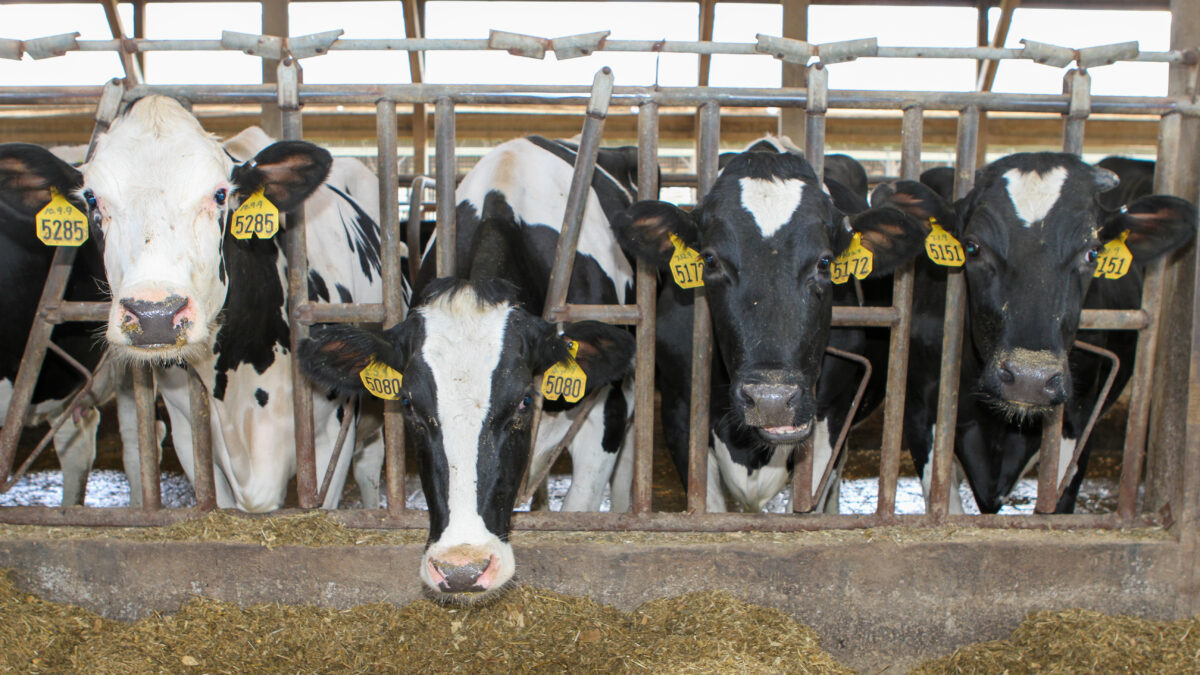Heartbreaking Time for Dairy
Zippy Duvall
President

photo credit: Alabama Farmers Federation, Used with Permission
Zippy Duvall
President
Much like spring follows winter, every dairy market boom is followed by a bust and vice versa. Dairy farmers are entering a fourth straight year of low prices as global milk production has grown faster than demand. The all-milk price averaged more than $25 per hundredweight at certain points in 2014, but it has been downhill from there. The milk price hit just $15.30 per hundredweight as of February 2018, and it’s not expected to get above $16 - $17 this year.
With no price recovery in sight, many of us personally know a dairy farming family that is getting out of production after generations of being in the business. About 10 percent of dairy farms across the nation have shut down over the past year.
About 10 percent of dairy farms across the nation have shut down over the past year.
Just in the last few days, I have heard from good dairy farming friends in Georgia that they’re selling all their cows. “This is the best business decision,” a member of the family said. However, “It’s never been just a job to us; it’s how we raise our family. Without our beloved cows, who in the world are we?” I think most of us in agriculture can relate to that, no matter what we grow or raise.
In March, I saw a news article about a farm in Vermont that auctioned off its cows and equipment. Turns out that farm was owned by my friend and Farm Bureau colleague, former Vermont Farm Bureau President Clark Hinsdale. According to the article, his was one of 12 dairy farms in that state to exit the dairy business just since January.
Clark’s summation that the structure of dairy farming is changing—that smaller family operations cannot sustain themselves—is concerning. When the market eventually turns in a better direction, and it will, most of the small, family-operated dairies that have shut down will not come back. It is heartbreaking to watch as second-, third- and fourth-generation dairy farms call it quits. This will have an irreversible impact.
I grew up on my family’s dairy farm. We got out of dairy farming years ago, during a previous bust, and switched to beef cattle and poultry production. But I’ll always cherish the experiences and the work ethic that my brother and I learned from milking cows. I still think a Holstein is one of the most impressive animals. It is sad to think of fewer opportunities for young people to grow up in dairy farming.
There is help on the way. With milk prices down and production costs up, the national dairy margin under USDA’s Dairy Margin Protection Program in February 2018 fell to $6.88 per hundredweight, the lowest level since June 2016. While that reflection of today’s dairy industry is nothing to cheer about, a silver lining is the lower margin will trigger much-needed program payments to farmers. Also, Congress recently passed legislation to make the program work better, including monthly margin calculations instead of bimonthly, and providing catastrophic coverage at the $5 margin level at no cost to producers. With those changes in place, USDA has opened the enrollment period for MPP coverage for 2018. It is hoped that more dairy farmers will sign up.
In addition, Farm Bureau has been working with USDA to develop a revenue insurance product, much like crop insurance, for dairy producers. Dairy farming is risky business. Producers need adequate risk management and Farm Bureau is excited about developing another tool to help them survive times like this. We look forward to being able to share more information about the program soon.
The old saying in dairy farming is the cure for low prices is low prices, meaning prices will go back up on the basis of reduced supply as farms shut down or cull herds. That acceptance of the cyclical nature of dairying might be of some help to get through the downturns by focusing on the upswing to come. But the bust that dairy farmers are facing today seems worse and more prolonged. This doesn’t feel like business as usual, even for dairy.
Many of us are necessarily focused on national policy solutions and global market trends. Those are important, but I will close by focusing on the people behind the policies and the data. The trait that I’ve found in just about every farmer I’ve ever known is that special spirit of brotherhood and sisterhood that abides in agriculture—our unique understanding of what our fellow farmers and ranchers are going through, our mutual respect for the farming way of life, and our willingness to offer an ear and a prayer to those in the farming family who are struggling. If you are a dairy farmer trying to hold on, please talk with your friends and neighbors and let them be a source of emotional support. If you know a dairy farmer, offer him or her an act of kindness, even if it’s a small favor or just an invitation to come over for supper and talk as friends. In times like this, little things can have a big impact.
Better days are ahead. Let’s help each other get there.
Zippy Duvall
President
Vincent “Zippy” Duvall, a poultry, cattle and hay producer from Greene County, Georgia, is the 12th president of the American Farm Bureau Federation.
Top Issues
VIEW ALL